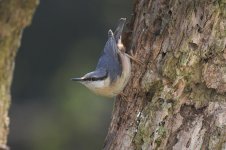Another question, Bill.
One of the Kingfisher images was taken with -1 Exposure Compensation (EC), and the other at 0 EC. Because of the low light you've had to use a high ISO.
Did the images come off the camera very dark? (I imagine the -1 EC shot must have been nearly black!)
If they did, and you needed to "add light" at the PP stage, then you pretty much guarantee a ton of noise in the end result.
You'd almost certainly have been better off dialing in a generous dollop of
positive EC - even though doing so will reduce your shutter speed - and increasing the ISO right up to 3200 if that was needed to maintain shutter speed.
You'll get
much better results from a well exposed (or even slightly over exposed) 3200 ISO image than you will from an underexposed 1600 ISO image that you have to add loads of EC to in post processing.
This leads to making mention of the principle of
ETTR, which has relevance to the point I'm making here, and which
really works.





